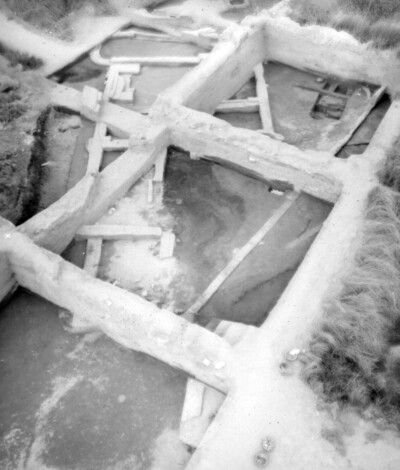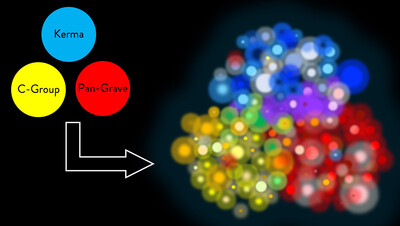
The investigation of the material, cultural and social foundations of past societies (both with and without writing) in Egypt and Sudan forms the focus of the research group »Archaeology in Egypt and Sudan«. Within this group a number of new field projects as well as collaborations with international missions and museums are conducted, to achieve a broad chronological and contextual framework for interdisciplinary analyses. Additional goals include the processing and publication of some aspects of the excavations at Tell el-Dabʿa as well as the maintenance, standardisation and collation of existing analogue and digital archives of that site.

![[Translate to English:] [Translate to English:]](/fileadmin/_processed_/4/2/csm_Abydos_Goldschatz_92842c9349.jpg)
![[Translate to English:] [Translate to English:]](/fileadmin/_processed_/a/5/csm_Abydos_c540c163eb.jpg)
![[Translate to English:] [Translate to English:]](/fileadmin/_processed_/c/d/csm_BeyondPolitics_Karte_7eb8f8a7a2.jpg)
![[Translate to English:] [Translate to English:]](/fileadmin/_processed_/f/8/csm_Turah1910_712d2766b7.jpg)
![[Translate to English:] [Translate to English:]](/fileadmin/_processed_/7/a/csm_EgyptLevant1_5941bdaf29.jpg)
![[Translate to English:] [Translate to English:]](/fileadmin/_processed_/6/d/csm_Assuan_Keramik-Mittleres-Reich_2_fa6092c15a.jpg)
![[Translate to English:] [Translate to English:]](/fileadmin/_processed_/0/8/csm_Kom_Ombo_3_3a6bca1776.jpg)


![[Translate to English:] [Translate to English:]](/fileadmin/_processed_/6/7/csm_TED_Landschaftsanalyse_1_4687530f4d.jpg)
![[Translate to English:] [Translate to English:]](/fileadmin/_processed_/d/1/csm_TED_Hafenforschung_1_e6114e9655.jpg)
![[Translate to English:] [Translate to English:]](/fileadmin/_processed_/3/c/csm_TeD_Ritualrelikte_080b1eb708.jpg)
![[Translate to English:] [Translate to English:]](/fileadmin/_processed_/5/c/csm_EzbetRushdi_Opfergrube_c1109d0f1c.jpg)
![[Translate to English:] [Translate to English:]](/fileadmin/_processed_/5/0/csm_TeD_Totenhaeuser_0837672760.jpg)

![[Translate to English:] [Translate to English:]](/fileadmin/_processed_/5/3/csm_EzbetHelmi_Skarabaen_2190a5e8ce.jpg)
![[Translate to English:] [Translate to English:]](/fileadmin/_processed_/1/6/csm_TeD_GebL_e473147760.jpg)
![[Translate to English:] [Translate to English:]](/fileadmin/_processed_/0/b/csm_TeD_L81_ef8ea93417.jpg)
![[Translate to English:] [Translate to English:]](/fileadmin/_processed_/3/2/csm_CanaaniteFabrics2_b9a39681e4.png)

![[Translate to English:] [Translate to English:]](/fileadmin/_processed_/a/3/csm_TeD_HVI_r23_24_86c96b38c2.jpg)
![[Translate to English:] [Translate to English:]](/fileadmin/_processed_/3/e/csm_BeautifulKush_957a319fb5.jpg)
